Planet is a large, round body that orbits a star and shines by the reflection of the star’s light. The International Astronomical Union (IAU), an organization of astronomers, recognizes eight planets that orbit the sun in our solar system. In order of increasing distance from the sun, they are (1) Mercury, (2) Venus, (3) Earth, (4) Mars, (5) Jupiter, (6) Saturn, (7) Uranus, and (8) Neptune. The IAU recognizes many smaller objects that also orbit the sun, with some, such as Pluto and Ceres, designated as dwarf planets. In addition, astronomers have discovered thousands of extrasolar planets (or exoplanets)—that is, planets that orbit other stars.
The definition of the term planet has changed over time. The word comes from the ancient Greek word planasthai (wanderer), which the Greeks used to describe the bright starlike objects that included Mercury, Venus, Mars, Jupiter, and Saturn, in addition to the sun and moon. These objects were visible to the naked eye and appeared to move relative to the stars in the sky. Beginning in the 1600’s, the definition of the word planet changed to include other rocky bodies that orbited the sun. This definition excluded the sun and moon, but it included asteroids and, later, the newly discovered planets Uranus, Neptune, and Pluto.
In 2006, the IAU voted to establish a definition for planet based upon three criteria: (1) a planet must orbit the sun, (2) it must have sufficient mass (amount of matter) so that its own gravitational pull compacts it into a round shape, and (3) it must have a strong enough gravitational effect to sweep the region of its orbit relatively free of other objects. The IAU recognizes three categories of solar system bodies orbiting the sun: (1) planets, which include the Earthlike and giant planets, (2) dwarf planets, which include Pluto and Ceres, and (3) small solar system bodies, which include comets and asteroids. The 2006 IAU definition of planet changed the designation of Pluto from planet to dwarf planet because Pluto has not cleared Neptune from its orbit—Pluto’s orbit intersects Neptune’s at two points.
The definition of what constitutes a planet continues to evolve. Some planetary scientists object to the IAU definition and in particular the change in Pluto’s classification. They point out, for example, that the planet Neptune has not cleared Pluto from its orbit. The diversity of exoplanets orbiting distant stars, along with evidence that many planets do not orbit a star but float freely between stars, challenges previous conceptions about the nature of planets. One group of scientists has proposed a Geophysical Planet Definition (GPD) that relies upon an object’s intrinsic properties for its classification rather than on its interaction with other objects. According to the GPD, a planet must be large enough to have sufficient mass that its gravity compacts it into a round shape, yet not so massive that it would initiate nuclear fusion in its core and become a star. At this point, there is no clear consensus among planetary scientists as to the best definition of planet.
Loading the player...Mars surface
The solar system
Our own solar system includes the sun and the planets that orbit it. The solar system also consists of numerous smaller objects that orbit the sun, such as asteroids, and comets. Astronomers divide the planets in the solar system into three main groups. The first group consists of the innermost four planets—Mercury, Venus, Earth, and Mars. These small, rocky worlds are called terrestrial (Earthlike) planets. They are composed mostly of metals and rocky materials. Earth is the largest of the terrestrial planets. The other terrestrial planets have diameters ranging from 38 to 95 percent of Earth’s diameter and masses of between 5.5 and 82 percent of Earth’s mass.
The four giant planets—Jupiter, Saturn, Uranus, and Neptune—make up the second group. They are called gas giants or Jovian (Jupiterlike) planets. The Jovian planets have relatively small rocky cores in their deep interiors, thick mantles of metallic hydrogen (in the cases of Jupiter and Saturn), or mantles of ices such as water and methane (in the cases of Uranus and Neptune), and gaseous atmospheres. None of the giant planets have a solid surface as does Earth. 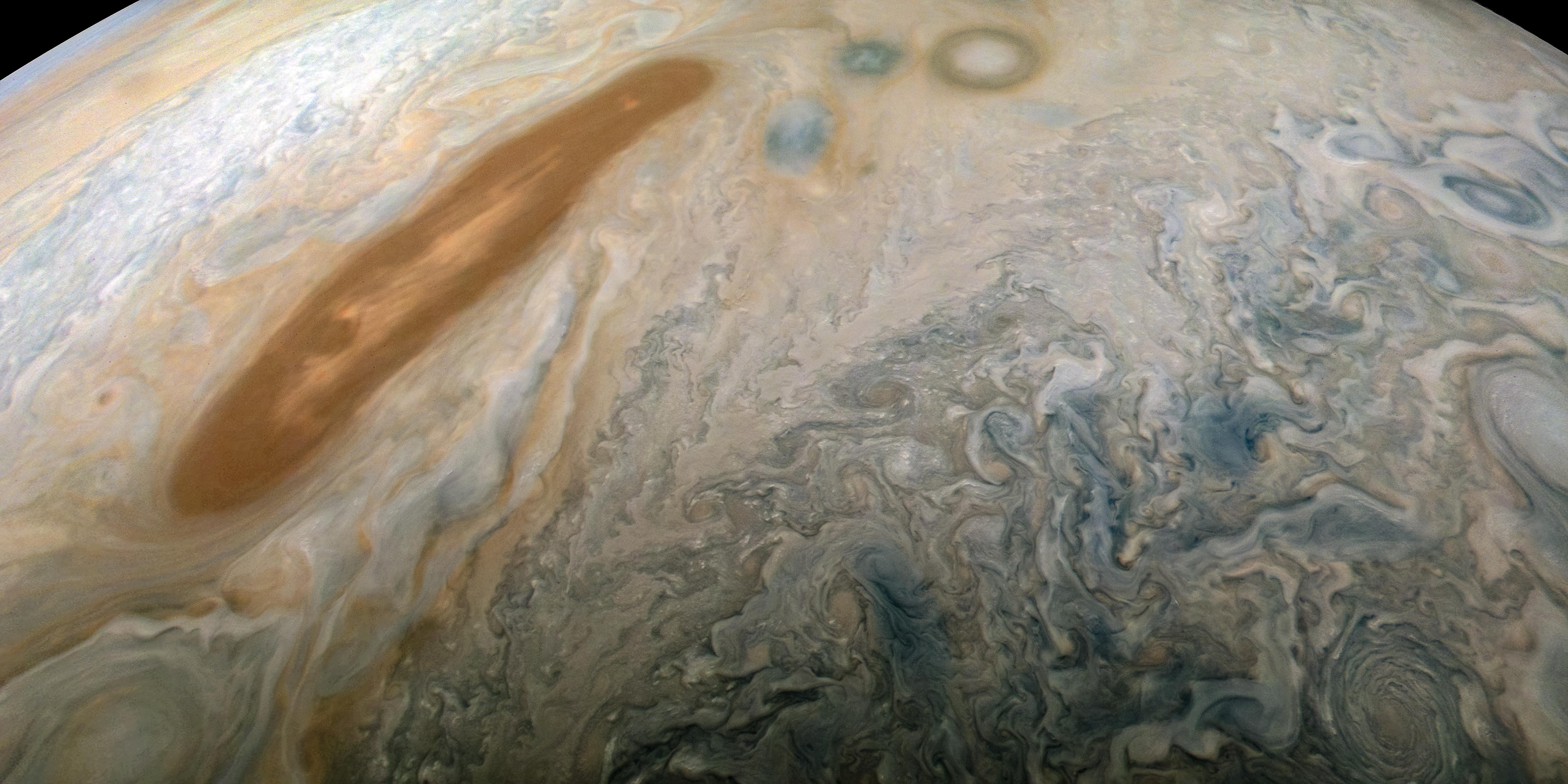
The giant planets range from 3.9 to 11.2 times Earth’s diameter and from 15 to 318 times Earth’s mass. The Jovian planets give off more energy than they receive from the sun in the form of infrared radiation (heat). Scientists think the slow compression of the planets by their own gravity is one source of this energy. Energy may also be released from a “rain” of liquid helium that is thought to occur in the high-pressure interior of the giant planets.
The third group of planets consists of the dwarf planets. It includes Ceres, a dwarf planet in the main asteroid belt between Mars and Jupiter; and Pluto and Eris, dwarf planets in the Kuiper belt, a collection of rocky and icy objects found in a region of the outer solar system beyond Neptune. The dwarf planets in the Kuiper belt appear to be mixtures of rock and ices of water, methane, and nitrogen. Some dwarf planets are geologically active with diverse surfaces and, in the case of Pluto, a dynamic atmosphere. Ceres has a layer of salty liquid water beneath its surface that shows evidence of eruption onto the surface.
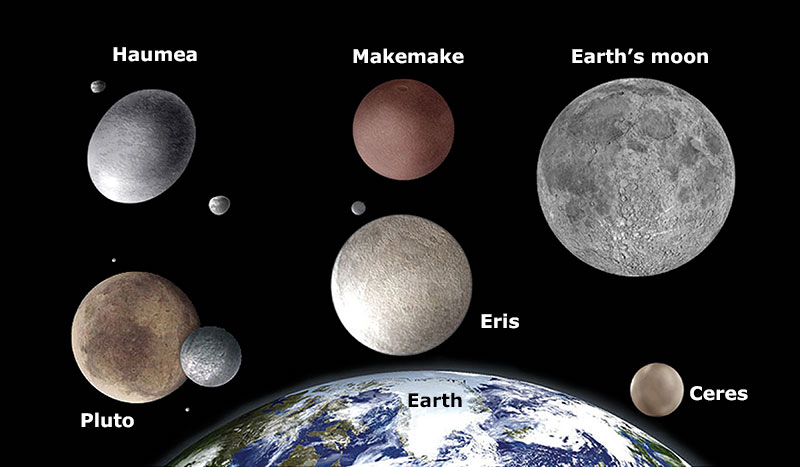
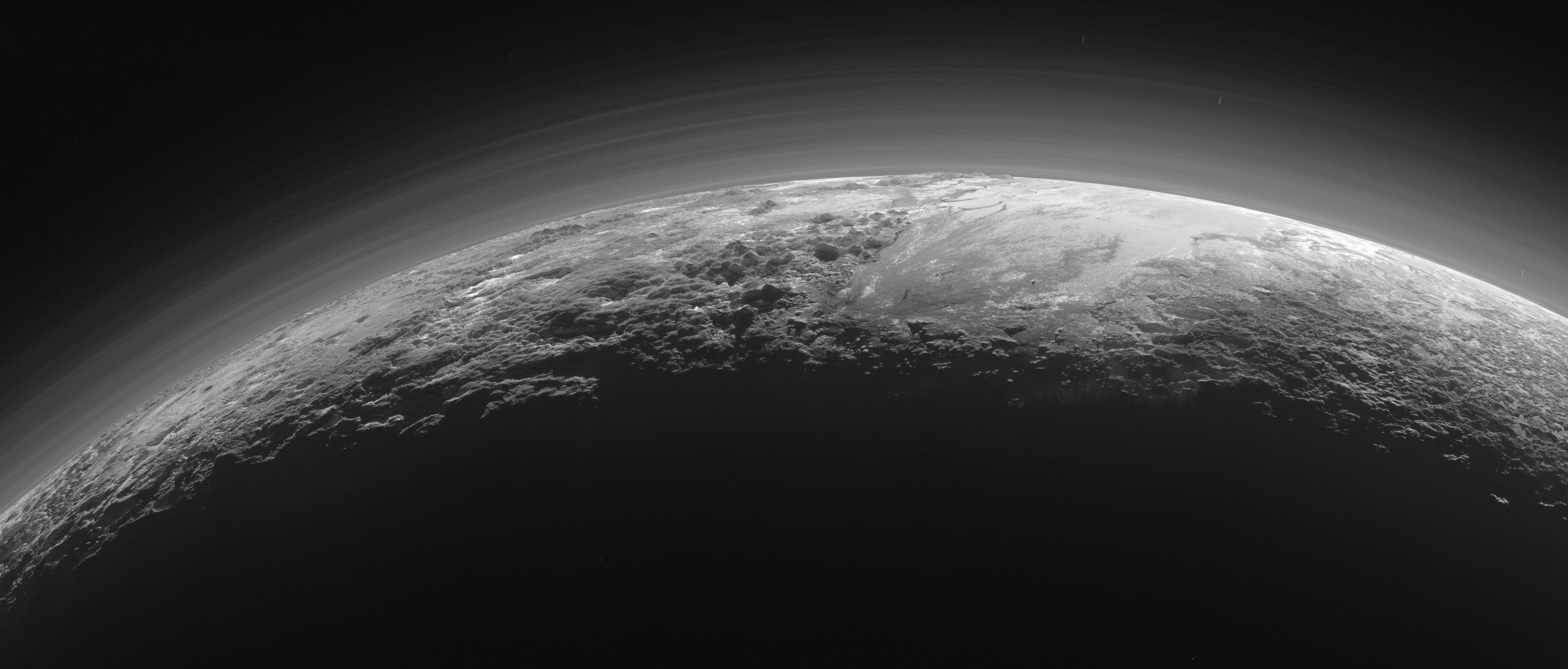
Observing the planets
Ancient peoples knew the five innermost planets because they are visible with the unaided eye. Astronomers discovered the outermost planets, including Uranus, Neptune, and the dwarf planet Pluto, with the aid of telescopes. Uranus is barely visible to the unaided eye from Earth and only under the darkest conditions. Neptune and Pluto can be seen from Earth only with a telescope.
To the unaided eye, the planets look much like the background stars in the night sky. However, the planets move from night to night in relation to the stars. Planets also appear brighter and to shine with a more steady light than stars. Stars are generally dimmer and seem to twinkle. Stars are so far away that they appear as points of light even in large telescopes. The twinkling is caused when the point of light from the star passes through different layers of the atmosphere. Each layer of the air bends light differently, and thus the point of light appears to change in brightness, or twinkle. Planets are much closer and look like tiny disks through a telescope. The atmosphere scatters light from different points on a planet’s disk. However, enough light always arrives from a sufficient number of points to provide a steady appearance.
The planets and the moon all appear to move along a common path through the sky known as the zodiac. At its center is the ecliptic, the path of the sun. If you see a particularly bright object near the ecliptic at night it is most likely a planet. Venus is often called the morning or evening star because it can be visible as a very bright object near the horizon either before sunrise or after sunset, respectively.
Planetary motions
Viewed from Earth, the planets and the stars appear to move around Earth. They rise in the east and set each night in the west. But the outer planets move westward across the sky a little more slowly than the stars. As a result, the outer planets seem to drift eastward relative to the background stars. This motion is called prograde motion. However, for a short time each year, some of the planets, in particular Mars, seem to reverse their direction. This backward motion is called retrograde motion.
In ancient times, astronomers thought that the moon, sun, planets, and stars moved around Earth in perfect circles. This way of understanding the heavens is referred to as the geocentric (Earth-centered) model of the universe. With this model, however, the ancients struggled to understand the occasional retrograde motion of the planets. By about A.D. 150, the Greek astronomer Ptolemy developed a theory in which the planets moved in small circles, and the centers of the small circles in turn moved around Earth in a perfect circle. Ptolemy thought that retrograde motion occurred during the short period in which the planet moved on its small circle in a direction opposite to the general motion of the small circle around Earth. These small circles were called epicycles.
In 1543, the Polish astronomer Nicolaus Copernicus proposed that planets actually moved around the sun in paths called orbits. This heliocentric (sun-centric) model proposed that planets closer to the sun move faster in their orbits than the planets farther from the sun. Whenever a faster-moving planet, such as Earth, passes a slower-moving outer planet such as Mars, the outer planet will appear to move backward for a short period. Copernicus was thus able to explain retrograde motion as simply apparent motion rather than actual changes in the directions of motions of the planets.
In the 1600’s, the German astronomer Johannes Kepler used careful observations of Mars made by the Danish astronomer Tycho Brahe to deduce his three laws of planetary motion. Although Kepler developed his laws for the planets of the solar system, astronomers have since used Kepler’s laws to describe planets that orbit other stars.
Kepler’s first law
says that planets move in elliptical (oval-shaped) orbits around their parent star—in the solar system, the sun. Before Kepler, scientists had assumed that the planets moved in perfectly circular orbits. An ellipse is a closed orbit around two fixed points called foci. The ellipse is formed by the path of a point moving along it so that the sum of its distances from the two foci remains the same. Kepler’s first law stated that the orbital paths of the planets form such ellipses with the sun at one of the two foci.
Kepler’s second law
says that planets move in such a way that an imaginary line joining the planet to its sun sweeps across equal areas of space in equal amounts of time. When a planet is close to the sun, it moves relatively rapidly in its orbit. The line therefore sweeps out a short, fat, triangle-like figure. When the planet is farther from its star, it moves relatively slowly. In this case, the line sweeps out a long, thin triangle. Kepler’s Second Law states that for equal time periods, the two figures have equal areas.
Kepler’s third law
says that the square of a planet’s period (the time it takes to complete an orbit around the sun)—that is, the period multiplied by itself—is proportional to the cube of the planet’s distance from the sun—that is, the distance multiplied by itself twice.
The English scientist, astronomer, and mathematician Isaac Newton presented his theory of gravity in 1687. His theory showed that the nature of gravity explained why Kepler’s laws describe planetary motion. Newton showed how his version of Kepler’s third law could be used to find the sum of the mass of the sun and the mass of a planet orbiting it. Using Newton’s theory of gravity, astronomers can determine the mass of a planet by studying the period and distance of one of its moons.
Rotation.
All planets rotate about an axis with different rates. The amount of time it takes Earth to complete one rotation on its axis is called a day. Jupiter and Saturn rotate much faster, in only about 10 hours. Venus rotates much slower. It takes about 243 Earth days for it to complete one rotation.
Most planets rotate in the same direction in which they revolve around the sun. The law of physics known as conservation of momentum holds that such motion does not change by itself—it takes a force to make an object change its orbit. Astronomers think that the solar system formed out of a cloud of gas and dust that was already spinning in the same direction that the planets orbit the sun.
Uranus and Pluto are tipped on their sides—that is, the axes of their rotation are highly tilted with respect to their paths around the sun. Venus is tipped so that the planet rotates in a direction opposite to the direction of its revolution around the sun. Astronomers think that large planetary-sized objects must have collided with Uranus, Pluto, and Venus to cause the planets to tilt so much.
Solar system planets
Astronomers measure planetary distances in astronomical units (AU). One astronomical unit is the average distance between Earth and the sun, which is about 93 million miles (150 million kilometers). The inner planets have orbits whose distances from the sun are 0.4, 0.7, 1.0, and 1.5 AU, respectively. The distances of the orbits of the giants are much larger: about 5, 10, 20, and 30 AU, respectively. The temperature, surface features, and other conditions on the planets vary widely, in part because of the planets’ differing sizes and distances from the sun.
Mercury,
the innermost planet, has no moon and almost no atmosphere. It orbits so close to the sun that temperatures on its surface can reach 800 °F (430 °C). But some regions near Mercury’s poles remain in shadow, enabling small amounts of ice to exist there. In 2004, the United States National Aeronautics and Space Administration (NASA) launched the MESSENGER (Mercury Surface, Space Environment, Geochemistry, and Ranging) space probe to Mercury. From January 2008 to September 2009, MESSENGER took images of previously unphotographed areas of Mercury during three fly-bys of the planet.
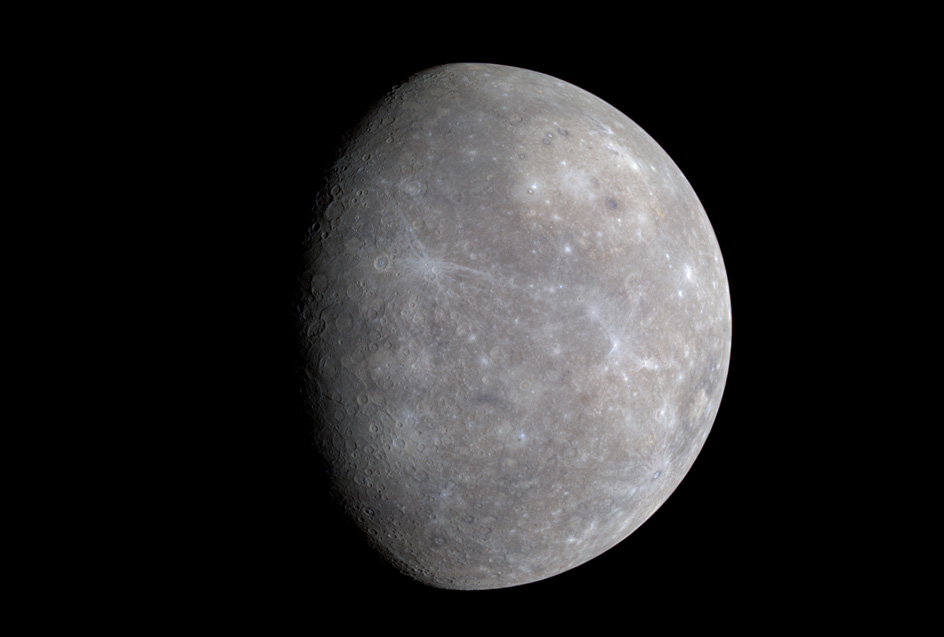
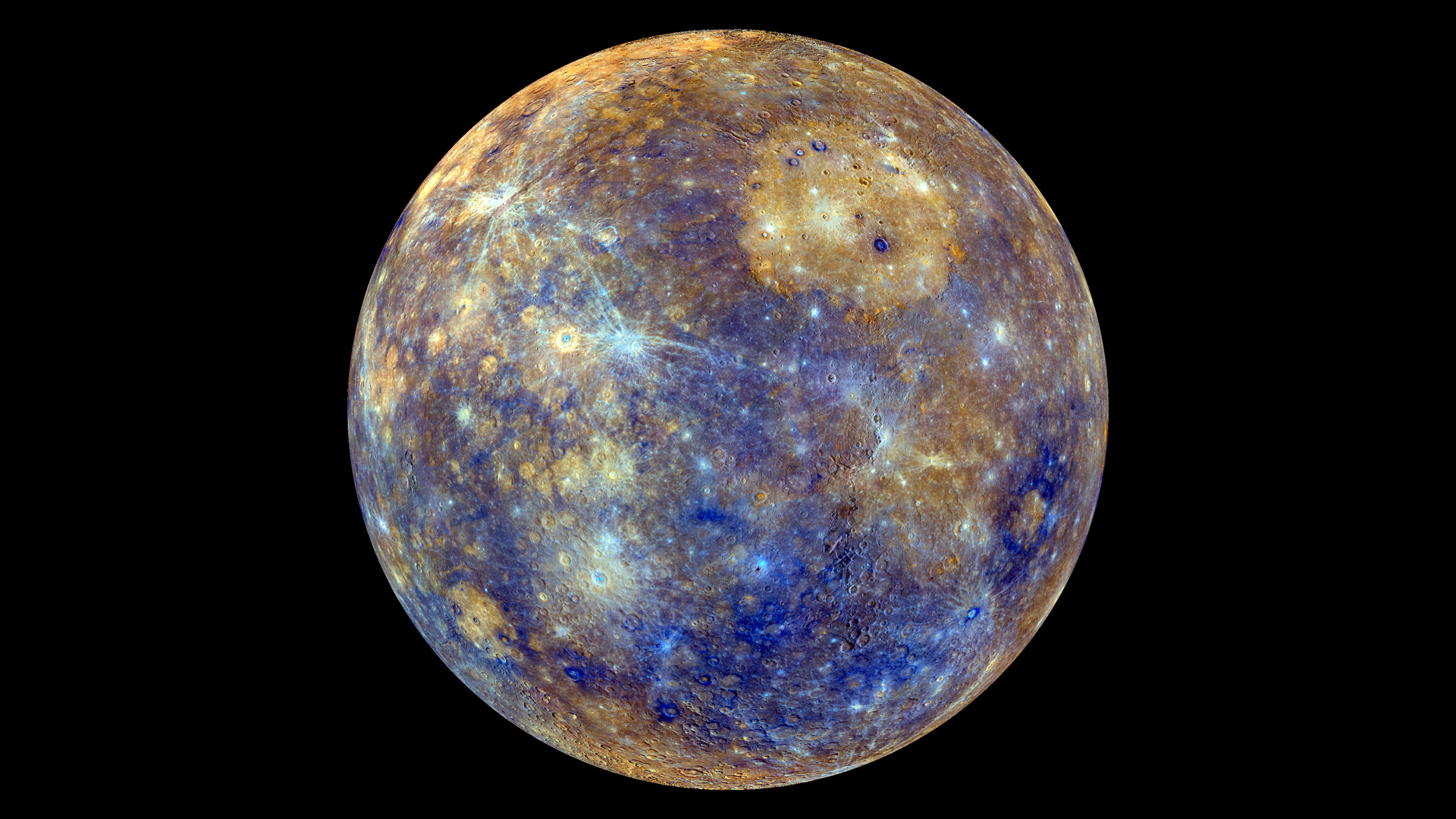
Venus
is known as Earth’s twin because it resembles the Earth in size and mass, even though Venus does not have a moon. Venus has a dense atmosphere that consists primarily of carbon dioxide. The atmospheric pressure (the weight of the overlying gases in the atmosphere) at Venus’s surface is 96 times that at Earth’s surface. Venus’s thick carbon dioxide atmosphere traps energy from the sun, raising the surface temperature to about 870 °F (465 °C), hot enough to melt lead. This trapping of heat is known as the greenhouse effect. The same greenhouse effect operates on Earth but to a smaller degree and keeps the Earth out of a permanent global ice age. The trapping of heat on Earth is increasing because the amount of carbon dioxide in the atmosphere is increasing, resulting in global warming. 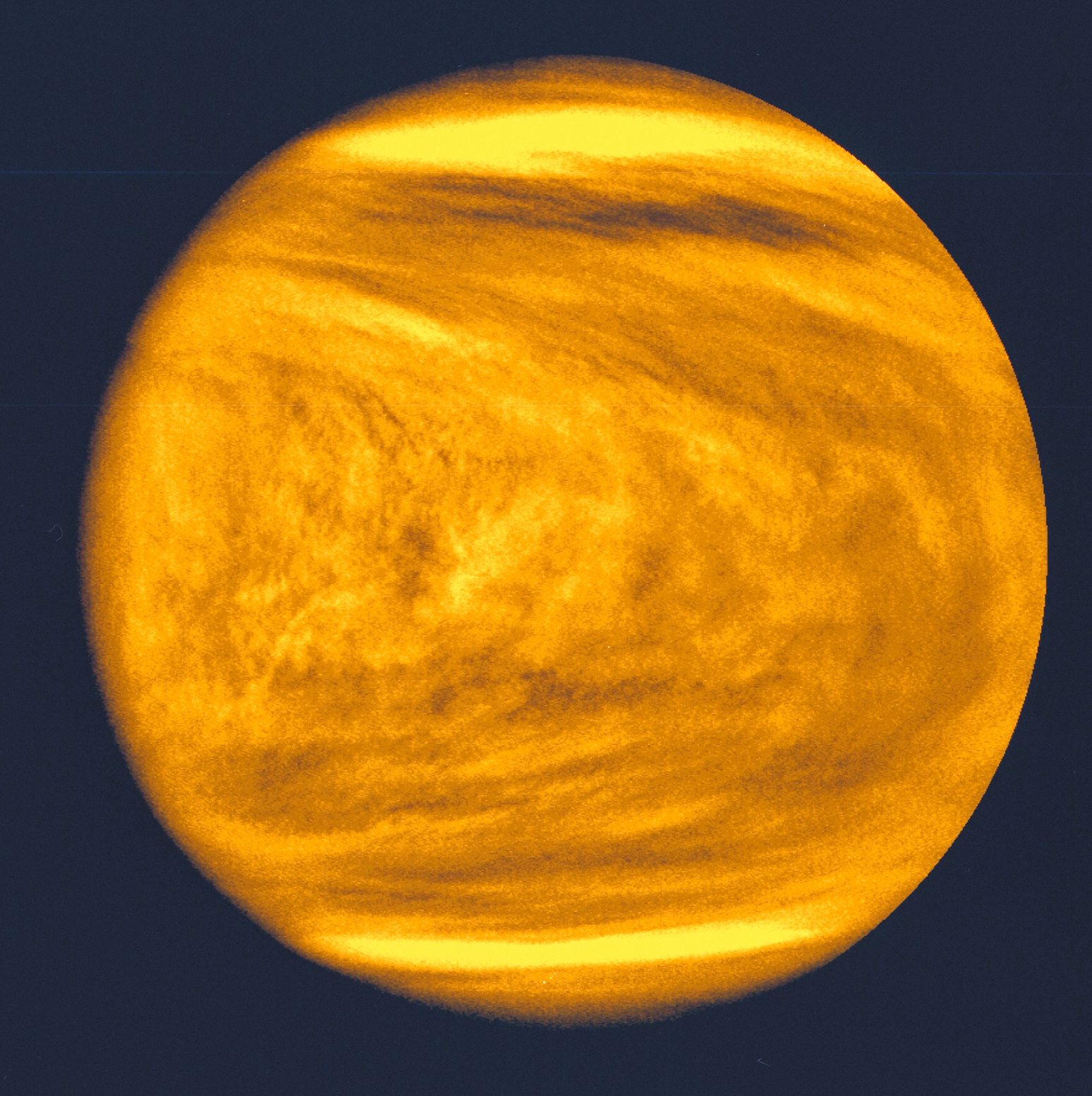
Earth,
our home planet, has an atmosphere that is mostly nitrogen and oxygen. Earth has oceans of liquid water that covers about 74 percent of its surface. Earth has one moon. Earth’s moon has a diameter of about 2,159 miles (3,474 kilometers)—about one-fourth of Earth’s diameter.
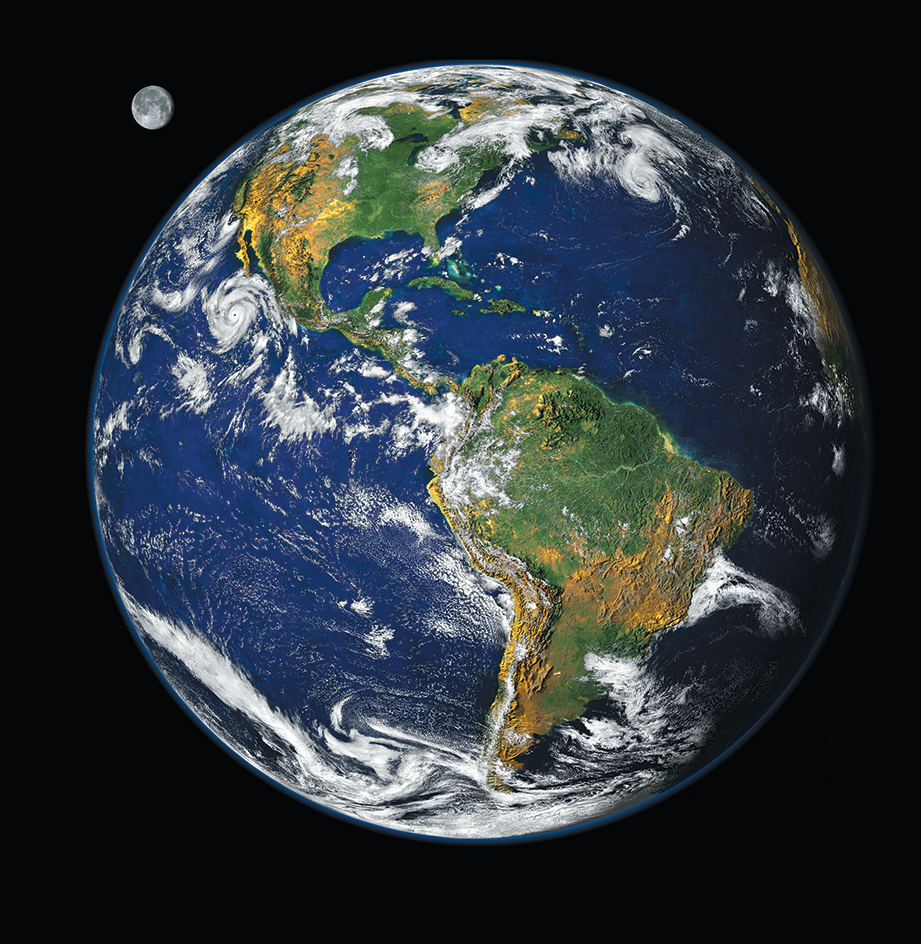
Mars
is known as the red planet because of a reddish-brown rusty dust on its surface. Mars is a cold, dry world. It has a thin atmosphere of mostly carbon dioxide. The atmospheric pressure on Mars is less than 1 percent of the surface pressure of Earth. Mars once had an ocean of liquid water on its surface, but the planet’s low gravity and lack of a magnetic field led to the escape of most of its water and atmosphere to space.
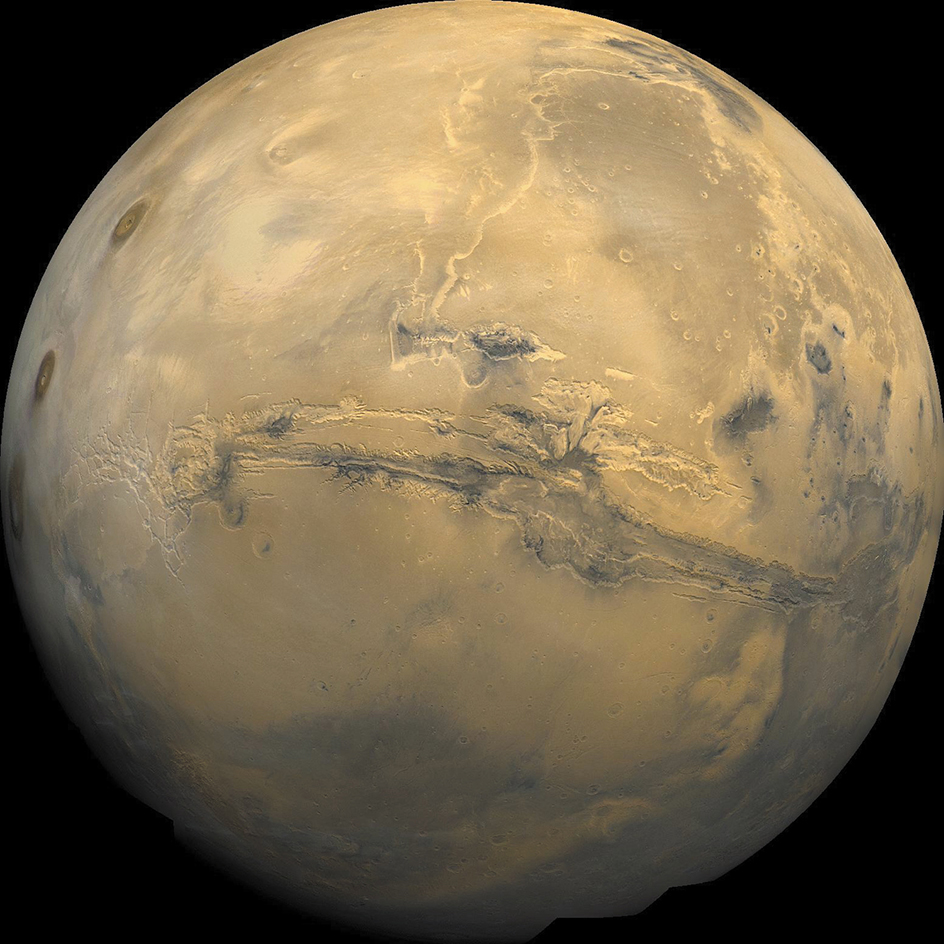

Mars has giant volcanoes, a huge system of canyons, and dried up streambeds. It has two tiny moons, Phobos and Deimos, that may be captured asteroids. Many spacecraft have orbited or landed on Mars, or roved its surface. In 2018, the Curiosity rover detected methane and organic material on the surface of Mars, suggesting that Mars was once habitable.
Jupiter,
the largest planet in the solar system, has more mass than all of the other planets combined. Like the other giant planets, it has gaseous outer layers and a rocky/metallic core. A huge storm system called the Great Red Spot, in Jupiter’s atmosphere, is larger in circumference than Earth and has been observed to be raging for hundreds of years.

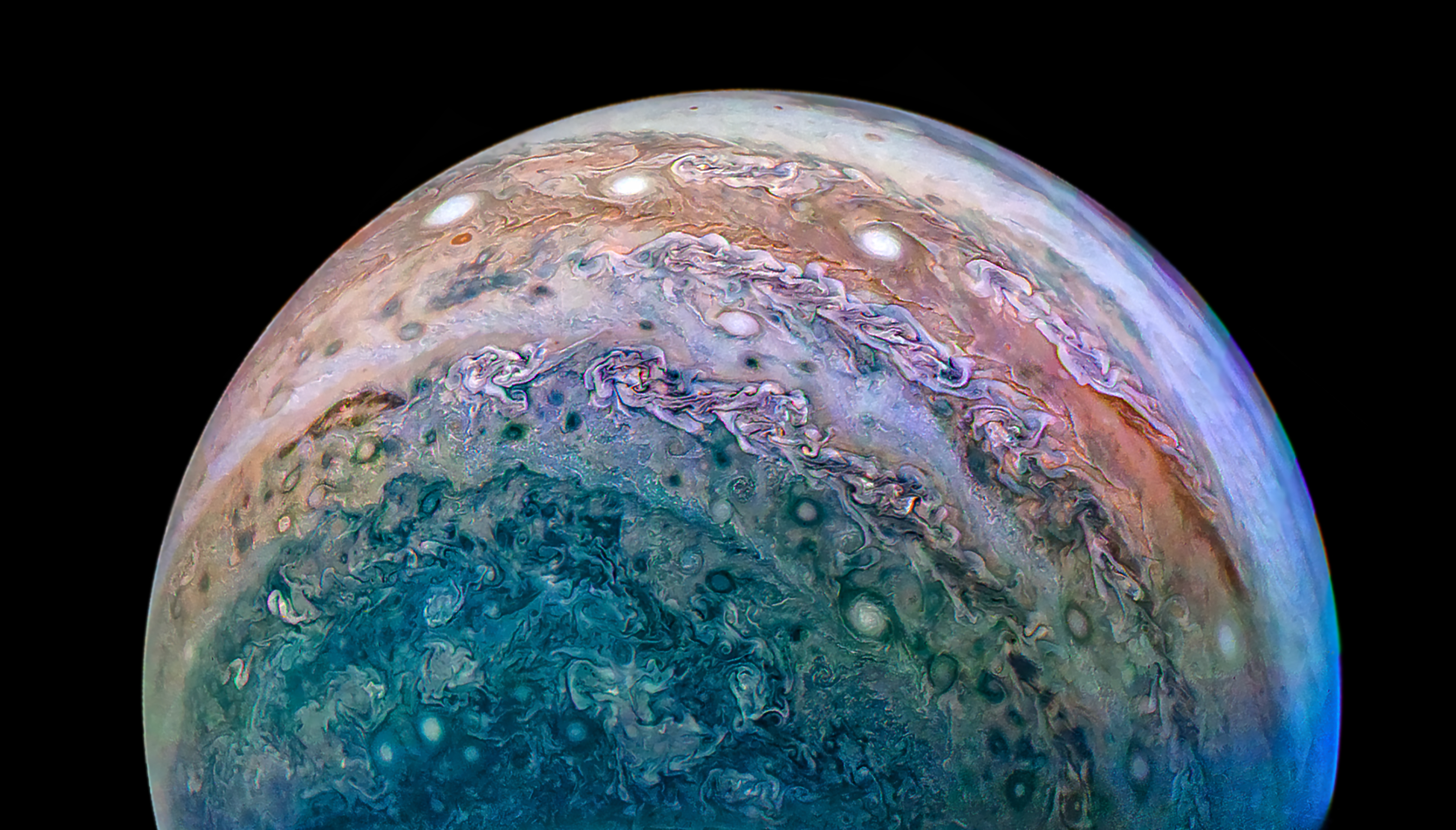
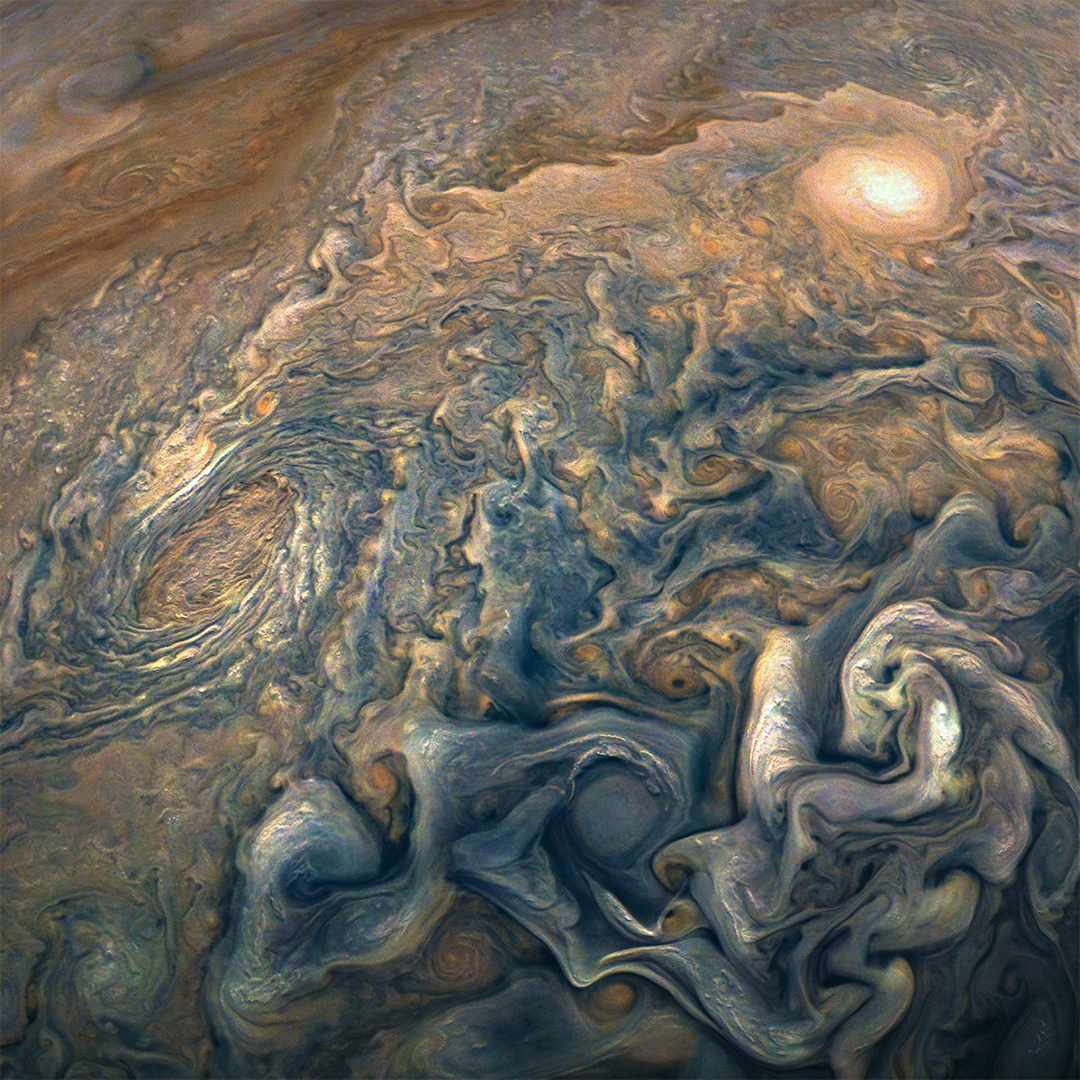
Jupiter’s four largest moons—Io, Europa, Ganymede, and Callisto—are each larger than Pluto. Ganymede is also larger than Mercury. All of these moons except Io are thought to have liquid water oceans under their icy surfaces. Circling Jupiter’s equator are four thin rings, consisting mostly of dust particles. In 1995, NASA’s Galileo spacecraft dropped a probe into Jupiter’s atmosphere and found that Jupiter has less water than expected. Galileo orbited Jupiter from 1995 to 2003 and characterized its atmosphere and magnetic fields. The Juno spacecraft entered a polar orbit about Jupiter in 2016 and provided the first detailed images of huge storm systems in the poles of Jupiter.
Saturn
has a magnificent set of gleaming rings. The gaseous atmosphere of this giant planet is not as colorful as Jupiter’s, however. Saturn’s hazy upper atmosphere makes the cloud patterns below it difficult to see. Saturn is also colder than Jupiter, because it is farther from the sun. The chemical reactions that color Jupiter’s atmosphere occur more slowly on Saturn. Saturn’s moon Titan is larger than Mercury. It has a thick atmosphere of nitrogen and methane.
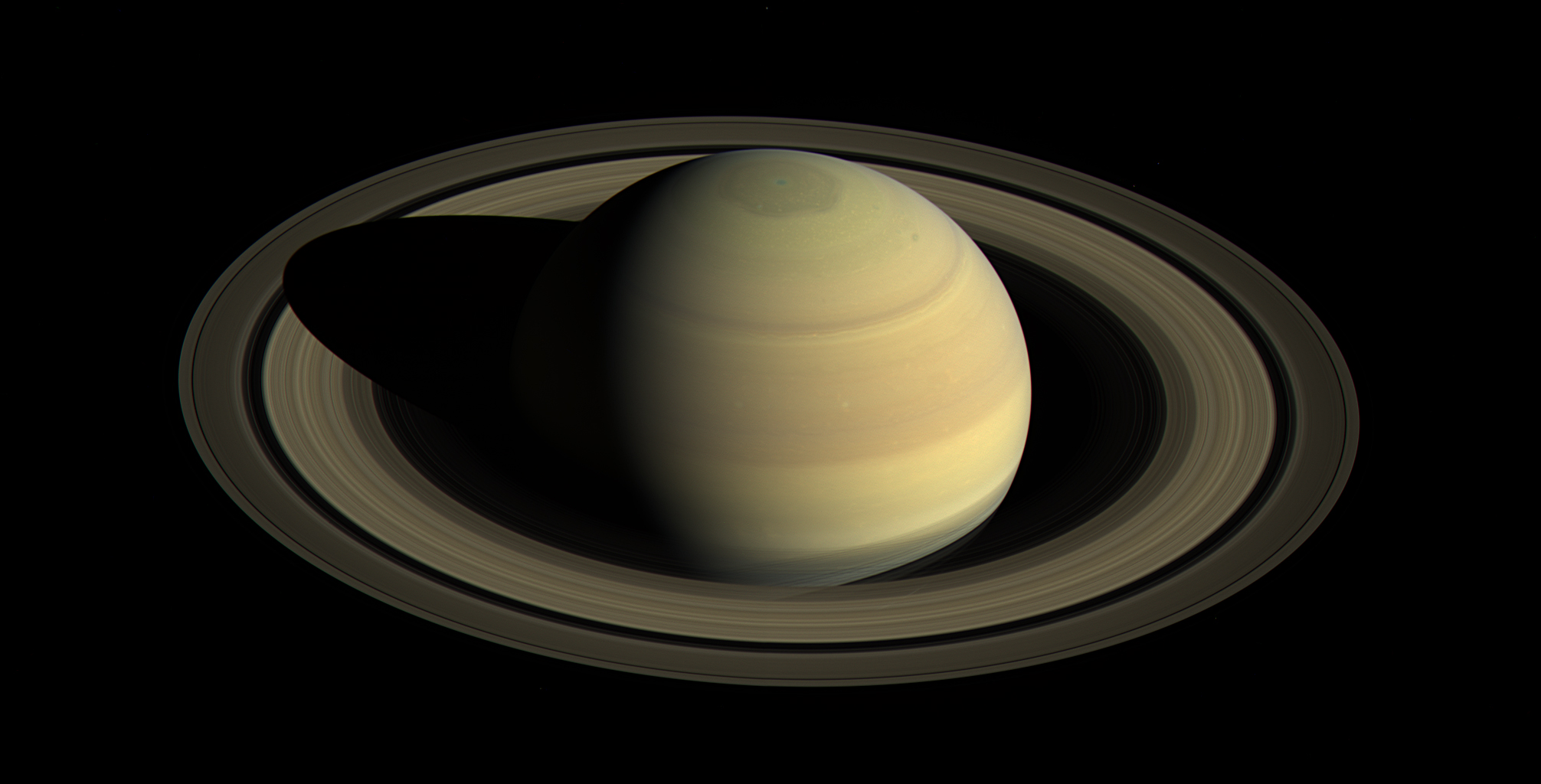
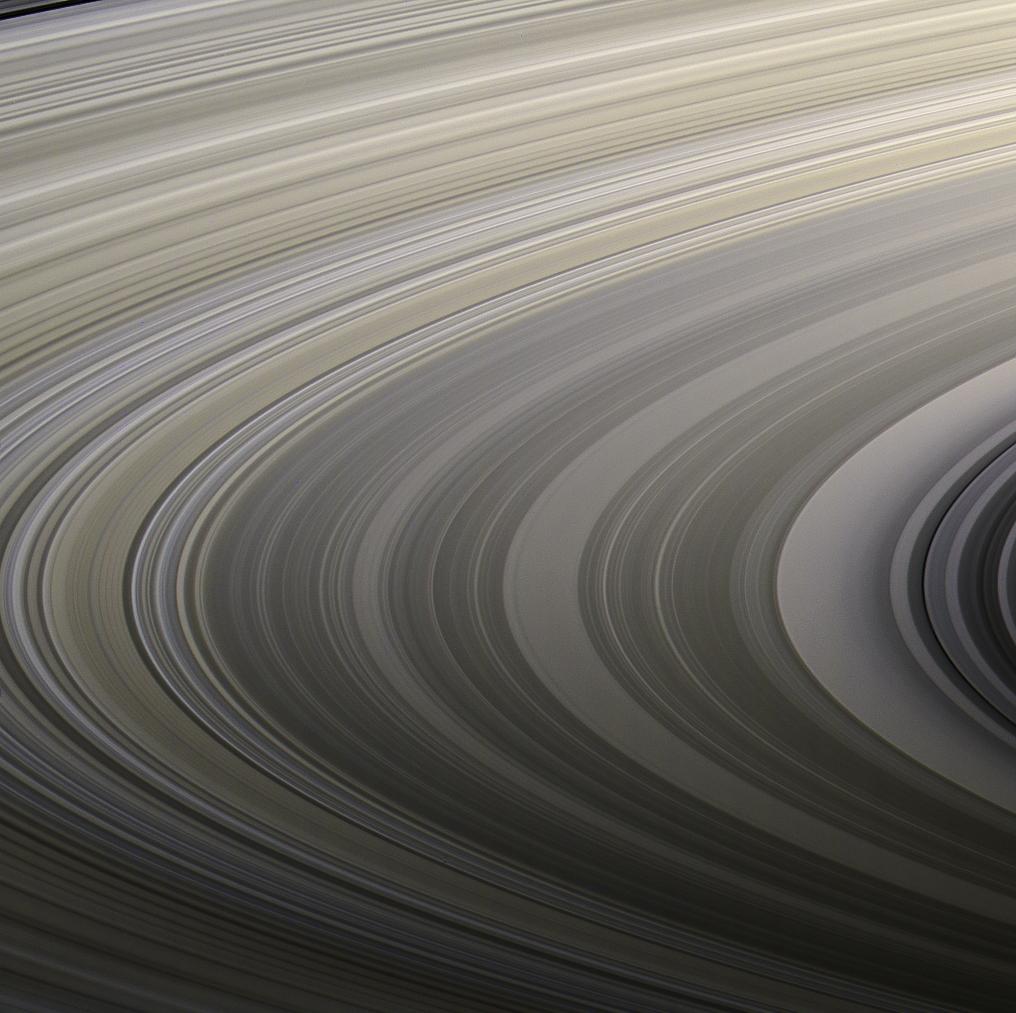
In 2004, the Cassini spacecraft entered Saturn’s orbit and began a 13-year mission to study Saturn and the planet’s rings and moons. In addition, the Cassini spacecraft sent a probe, called the Cassini-Huygens lander, to the surface of Saturn’s largest moon, Titan.
Uranus
was the first planet discovered with a telescope. The German-born English astronomer William Herschel discovered it in 1781. At first he thought he had discovered a comet. Almost 200 years later, scientists detected 11 thin rings around Uranus. The rings were discovered when the planet moved in front of a star and the rings eclipsed the star’s light. Voyager 2 studied Uranus and its rings and moons close-up in 1986. 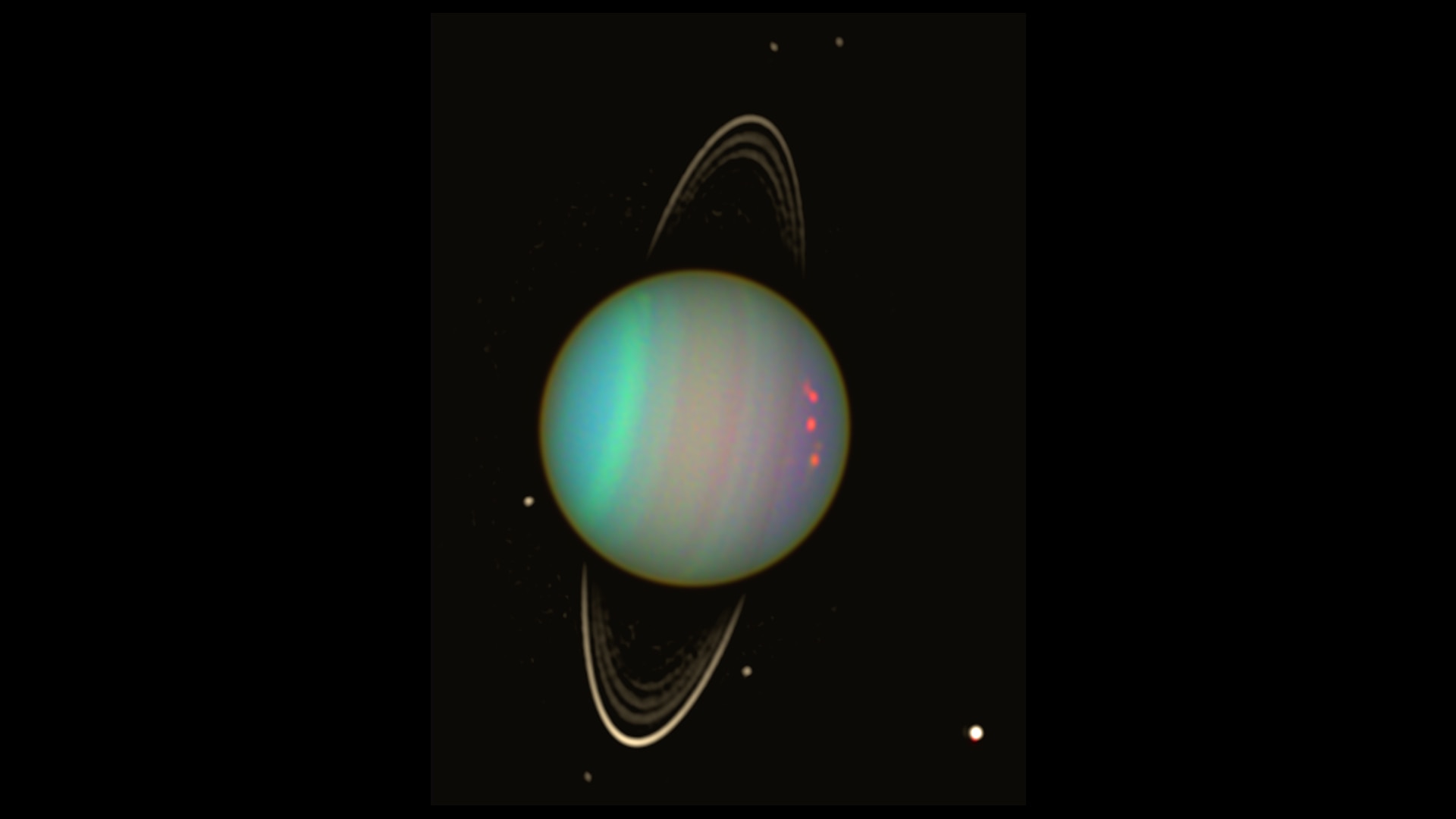
Neptune
was first observed in 1846 by the German astronomer Johann G. Galle. The French astronomer Urbain Le Verrier and the English astronomer John Couch Adams had predicted the existence and location of Neptune by studying the orbit of Uranus.
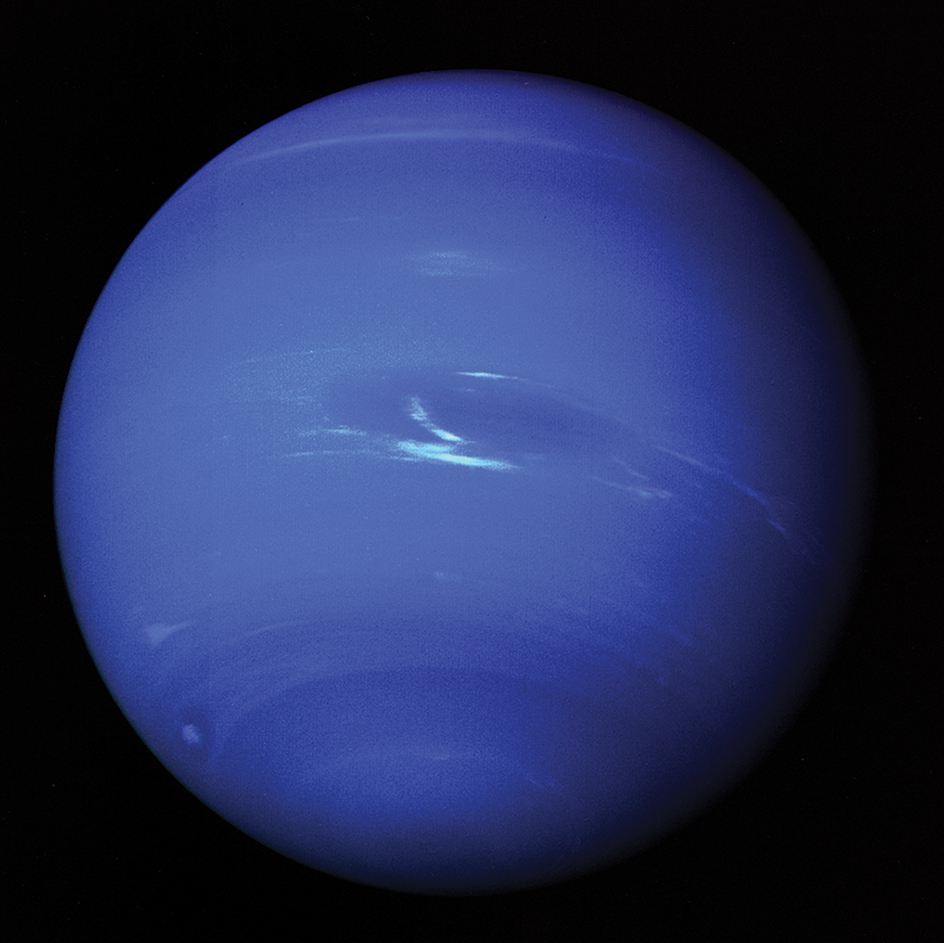
Neptune has four narrow rings, one of which consists of clumps of matter rather than a smooth, continuous circle. Neptune’s moon Triton is one of the largest in the solar system and has geysers that spew a mix of frozen nitrogen and darker particles onto the moon’s surface.
In 1989, the Voyager 2 probe found that Neptune had a storm system, called the Great Dark Spot, similar to Jupiter’s Great Red Spot. But five years later, in 1994, the Hubble Space Telescope found that the Great Dark Spot had vanished. In 2016, astronomers using the same telescope announced that the dark spot (or perhaps a different but similar one) had reappeared.
Dwarf planets
Ceres,
a dwarf planet, ranks as the largest of the millions of asteroids found between the orbits of Mars and Jupiter. The Italian astronomer Giuseppe Piazzi discovered Ceres in 1801. Ceres has a rocky composition and resembles a slightly squashed sphere. Its longest diameter measures 605 miles (975 kilometers). As with Pluto, astronomers once widely considered Ceres a planet. In 2006, Ceres was designated a dwarf planet by the IAU. 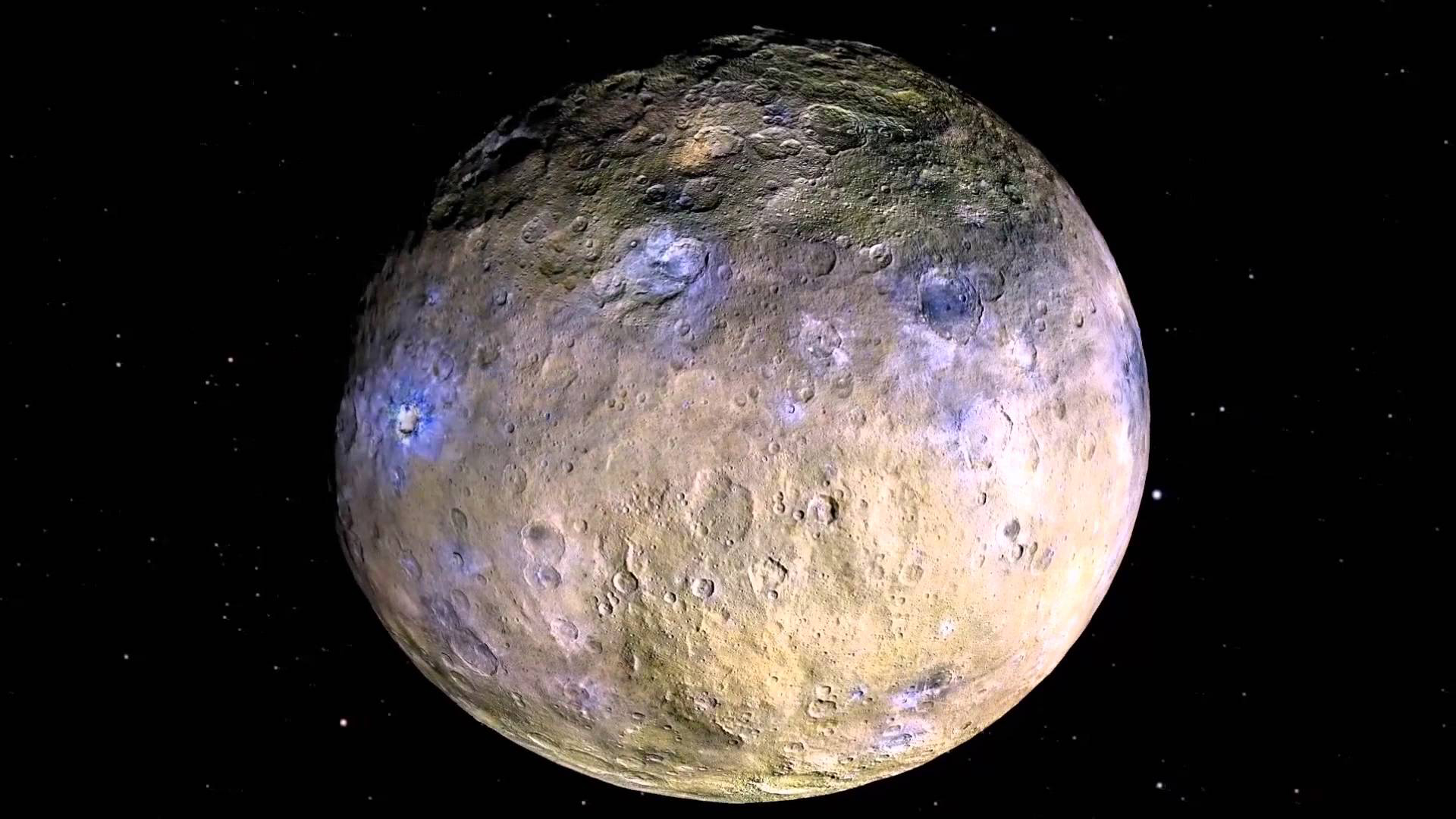
Pluto
was discovered by the American astronomer Clyde W. Tombaugh in 1930. Pluto has diverse geological features across its surface, and has an atmosphere that contains layers of thin clouds. Pluto’s surface is made up of nitrogen and methane ice with large dark plains of accumulated thick organic material. Pluto’s largest satellite, Charon, measures about half Pluto’s diameter. Pluto also has four smaller moons. The New Horizons probe, launched in 2006, observed Pluto during a close fly-by in July 2015. 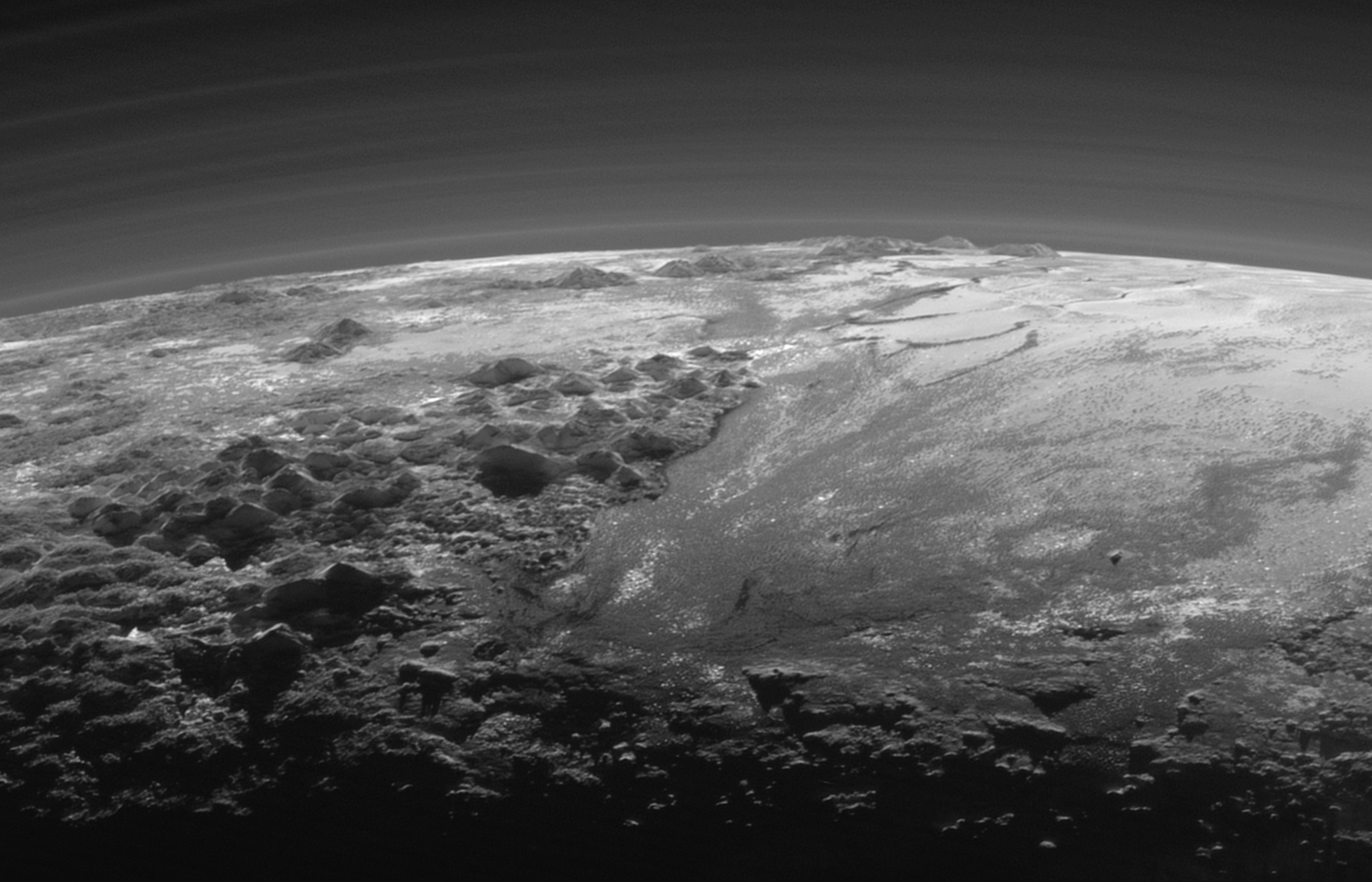
The outer dwarf planets
generally lie beyond the orbit of Neptune. Astronomers have had difficulty studying bodies in this region because they are extremely far from Earth and very dim. Dozens of them probably fit the IAU’s definition of a dwarf planet. Many of these bodies belong to the Kuiper belt. The IAU has named some outer dwarf planets plutoids in honor of Pluto, the first one discovered.
Eris
ranks as one of the largest dwarf planets with a diameter of about 1,450 miles (2,350 kilometers). It is only slightly smaller than Pluto. Eris’s surface contains methane ice. Eris has a small moon, Dysnomia, that measures about 1/8 the diameter of Eris.
Makemake
is the third plutoid and fourth dwarf planet to be named. Makemake << MAH keh MAH keh >> is irregularly shaped and has a diameter ranging from 800 to 1,100 miles (1,300 to 1,800 kilometers).
Haumea
became the fourth plutoid and fifth dwarf planet when it was discovered in 2008. Haumea << how MAY ah >> spins fast and is as wide as Pluto, but cigar-shaped.
Extrasolar planets
Astronomers have discovered many diverse types of planets that orbit distant stars. These planets are called extrasolar planets or exoplanets. Detecting these distant objects has been accomplished only within the past few decades by using large telescopes with highly sensitive detectors.
Discovering exoplanets.
Astronomers use several methods to search for exoplanets. The most common detection methods make use of (1) direct imaging (photography), (2) gravitational microlensing, (3) radial velocity, and (4) transits.
Direct imaging.
Astronomers have discovered few exoplanets using direct imaging. Most photographs of distant stars do not provide enough detail to reveal any planets that may orbit the star. Astronomers can gather enough detail only by imaging a dim star over the course of months or years.
Gravitational microlensing
occurs when a star passing between Earth and another star acts like a magnifying lens. The gravitational pull of the foreground star bends and focuses light passing near it, causing the background star to appear brighter. Astronomers can detect planets orbiting the foreground star by observing changes in the light received from the background star.
Radial velocity.
In the radial velocity method, astronomers detect tiny, regular changes in the light coming from a star over a long period. The changes in light are caused by the gravitational pull of an orbiting planet. Such changes can not only reveal the presence of a planet, but they can also be used to determine the planet’s mass and orbital period. Astronomers have discovered hundreds of planets using the radial velocity method.
Transit
occurs when an orbiting planet passes in front of its star, as seen from Earth. The planet blocks some of the light from the parent star, causing it to dim slightly. Astronomers measure the size of such a planet by measuring how much it dims the starlight. This technique has been used to discover thousands of planets. For more information about how astronomers make and confirm exoplanet discoveries, see Exoplanet.
Types of exoplanets.
The thousands of exoplanets that astronomers have discovered include a wide range of objects with characteristics unlike anything in our solar system. This diversity of planet types has challenged traditional theories of how planets form and evolve. Many of these exoplanets have no counterpart in our own solar system. These include gas giant exoplanets that are much closer to their central star than Mercury is to our own sun. Astronomers refer to such planets as hot Jupiters because of their size and proximity to their central star. In our solar system, all the giant planets are at much greater distances from the sun. The existence of hot Jupiters has caused astronomers to question standard theories on where giant planets form and whether such planets migrate inward after their formation.
Earth-sized exoplanets have also been discovered close to their central stars. Some are so close that the exoplanet’s surface temperature must be very high. The surfaces of these exoplanets would be an ocean of magma, and their atmospheres would consist of vaporized rock.
Astronomers have discovered exoplanets in two-star systems and in four-star systems. Other exoplanets are observed to have extremely elliptical orbits. For example, an exoplanet called 16 Cygni B b follows an elliptical path that takes it alternately closer to its star than Venus is to our sun and then farther from its star than Mars is from our sun. Other exoplanets have been discovered in nearly circular orbits, but retrograde and inclined so much that they are nearly perpendicular to the rotation axis of their star. A large number of exoplanets exist in multiplanet systems. Some stars have as many as seven exoplanets.
Astronomers have found that certain categories of exoplanets appear to be common in our galaxy yet missing in our own solar system. These include objects referred to as super-Earths and water worlds. Super-Earths are terrestrial—much like Earth in composition in that they consist mostly of rock and metal. However, they range in size from 25 percent to 50 percent larger than Earth. Super-Earths may be the most common type of exoplanet, comprising nearly 25 percent of all known exoplanets. Water worlds are exoplanets that may consist of more than 50 percent water by mass, but they range in mass from 3 to 8 times the mass of Earth. Scientists think such exoplanets probably have rocky and metallic cores, but the cores are under as much as 6,200 miles (10,000 kilometers) of water. Water worlds appear to comprise about 3 percent of all known exoplanets.
A few terrestrial-type exoplanets have been discovered that are as much as 8 to 10 times Earth’s mass and nearly twice Earth’s diameter. One is 17 times as massive as Earth. Planetary scientists think these huge rocky exoplanets have a dynamic geology and an extremely thick and hot atmosphere.
Other exoplanets appear to be rare and also quite exotic. For example, a gas giant called TrEs-2 b is pitch black and very hot, resembling a giant glowing coal in space.
Rogue planets.
Since 2012, scientists have discovered dozens of rogue planets, which travel through space without orbiting a star. Astronomers think that such rogue worlds, also known as “free-floating planets,” may be quite common. Such planets could have been ejected from planetary systems by collisions, or near-collisions, with other planets. Or they may have formed alone from a cloud of gas and dust, like a small star.
Rogue planets are difficult to detect, so astronomers cannot easily estimate their number. Astronomers suspect that rogue planets are at least as numerous as the planets that are gravitationally bound to stars. Such rogue worlds may still retain their energy of formation or even have a thick atmosphere, making them warm enough for liquid water to exist.
Habitable zone exoplanets.
In 2016, astronomers discovered an exoplanet orbiting within the habitable zone of its star. The habitable zone is the range of orbital distances from the star between which liquid water can exist on a planet’s surface. Most scientists consider liquid water to be an essential ingredient for life. Proxima Centauri, the star nearest to the sun, is 4.2 light-years away and has a planet within its habitable zone. Astronomers have determined that the exoplanet, called Proxima Centauri b, is slightly larger than Earth and probably has a rocky surface. A terrestrial planet within a star’s habitable zone may be capable of supporting life.
In 2017, astronomers announced that they had detected seven Earth-sized exoplanets orbiting the star TRAPPIST-1, about 40 light-years away. Three of these exoplanets orbit within the star’s habitable zone. Precise density measurements suggest that those three exoplanets have oceans of water deeper than Earth’s oceans.
However, TRAPPIST-1 is very different from our own sun. TRAPPIST-1 is a highly active red dwarf star that gives off large doses of X rays and ultraviolet radiation—doses much greater than those emitted from our sun and which may impact the evolution of the atmospheres and surfaces of the star’s orbiting planets. TRAPPIST-1 is about 7.6 billion years old, or about 3 billion years older than our solar system. Astronomers therefore think that whatever physical, chemical, or biological processes occur there have been going on for much longer than those on Earth.
Future discoveries.
From the large number of exoplanets discovered since 1992, astronomers calculate that, on average, every star in our galaxy has three to five planets, with one of those being terrestrial or Earthlike. Thus there may be as many as one trillion planets in our Milky Way galaxy. In addition, it is possible there are just as many rogue planets—those without a home star—in our galaxy.
In 2018, astronomers using the European Southern Observatory’s (ESO) Very Large Telescope (VLT) captured an image of a new planet forming around the distant star PDS 70. The planet, named PDS 70 b, can be seen clearing a path through the protoplanetary disk of material from which it formed and that surrounds its parent star. Astronomers determined that the planet is about as close to its parent star as Uranus is to our sun. The new planet is a gas giant, several times more massive than Jupiter. And because of its rapid growth by accumulation of disk material, the surface of the planet is more than three times hotter than any planet in our solar system.
The VLT searches for exoplanets and disks around nearby stars by using a technique known as high-contrast imaging. This technique uses a coronagraph, a disk that blocks out the extremely bright light of the central star and uses special data-processing techniques to image planetary companions orbiting the star. The ESO results are especially important for helping scientists understand the early steps in the formation of giant planets.
The future of exoplanet research promises to be rich in discoveries. In 2018, NASA launched the Transiting Exoplanet Sky Survey (TESS) telescope to search for exoplanets transiting bright stars throughout most of the sky. The James Webb Space Telescope, a space-based observatory, was launched in 2021. This telescope can search the atmospheres of exoplanets for the elements of life. The terrestrial exoplanet Proxima Centauri b, located within the habitable zone of its parent star, is an ideal candidate for future study using such advanced telescopes.
Planet formation
Astronomical evidence shows the solar system formed about 4.6 billion years ago from a giant, rotating cloud of gas and dust called the solar nebula. Gravity pulled together a spinning clump of dense gas at the center of the nebula to form a huge, hot sphere where nuclear fusion began in its center. That sphere became our sun.
The remaining gas and dust flattened into a protoplanetary disk that swirled around the sun. Rocky particles within the disk collided and stuck together, forming bodies called planetesimals. Planetesimals later combined to form the planets. Close to the sun, the materials that could condense at high temperatures, like metals and rocks, formed the Earthlike planets. At the distances of the outer planets, gases such as water and methane froze into ice, creating huge balls of rock and ice that then gravitationally pulled in large amounts of hydrogen and helium to form the Jovian planets. Astronomers first observed such protoplanetary disks around distant stars in 1983.
Hot gases and electrically charged particles flow from our sun constantly, forming a high-velocity stream of plasma called the solar wind. The solar wind was much stronger when the sun first formed than it is today. The early solar wind eventually drove the gas and dust that did not collect into planets into the interstellar medium. This marked the end of solar system planet formation. Some scientists have suggested that the giant planets in other systems may have formed far from their parent stars and later migrated inward by a mechanism that is still unclear.
